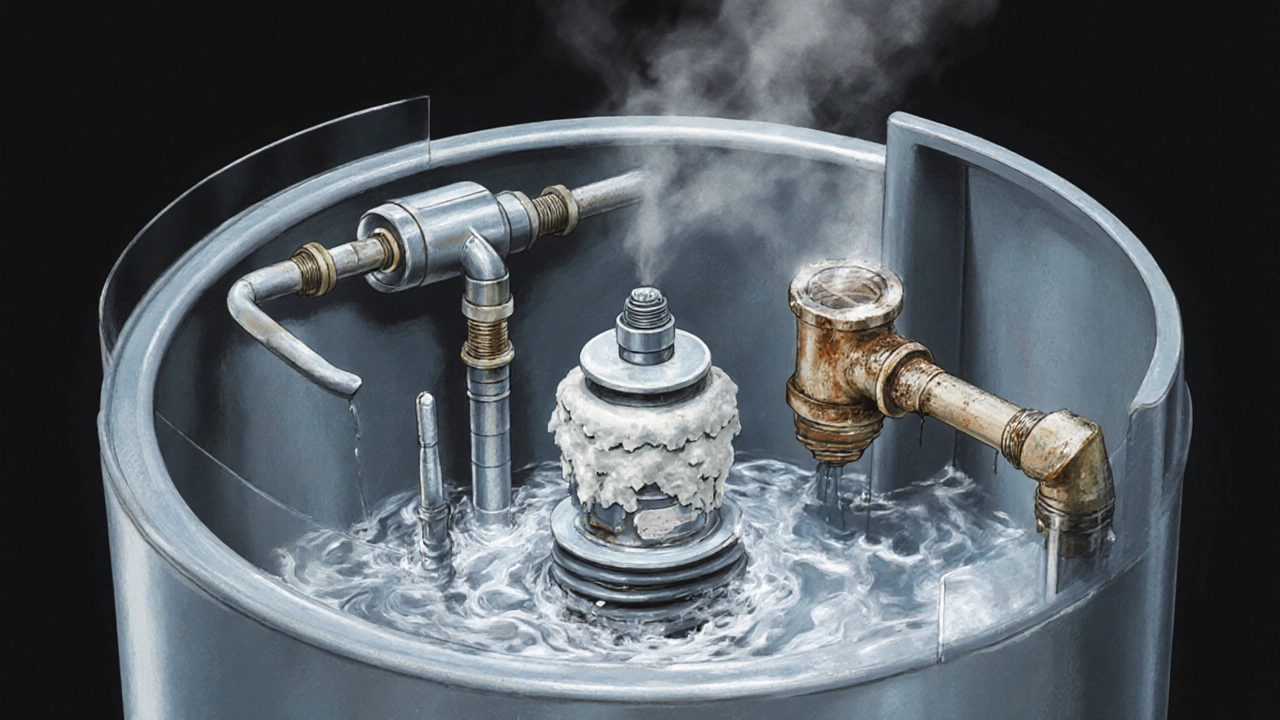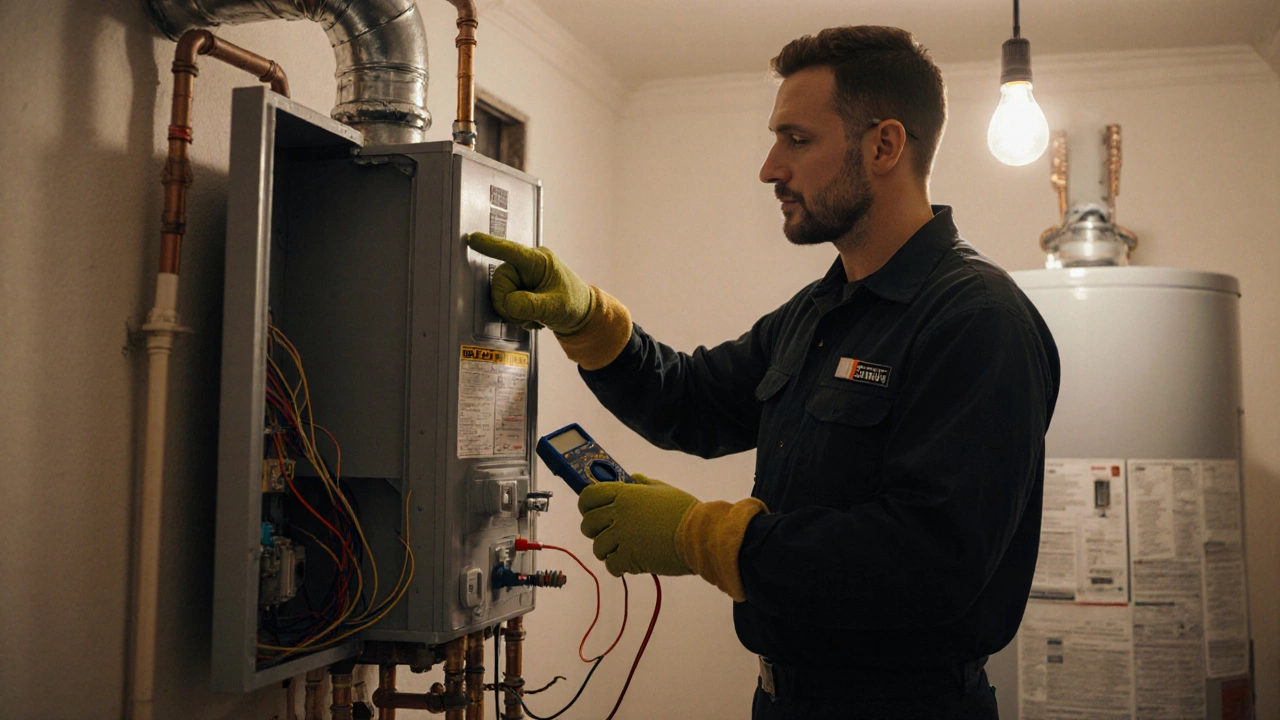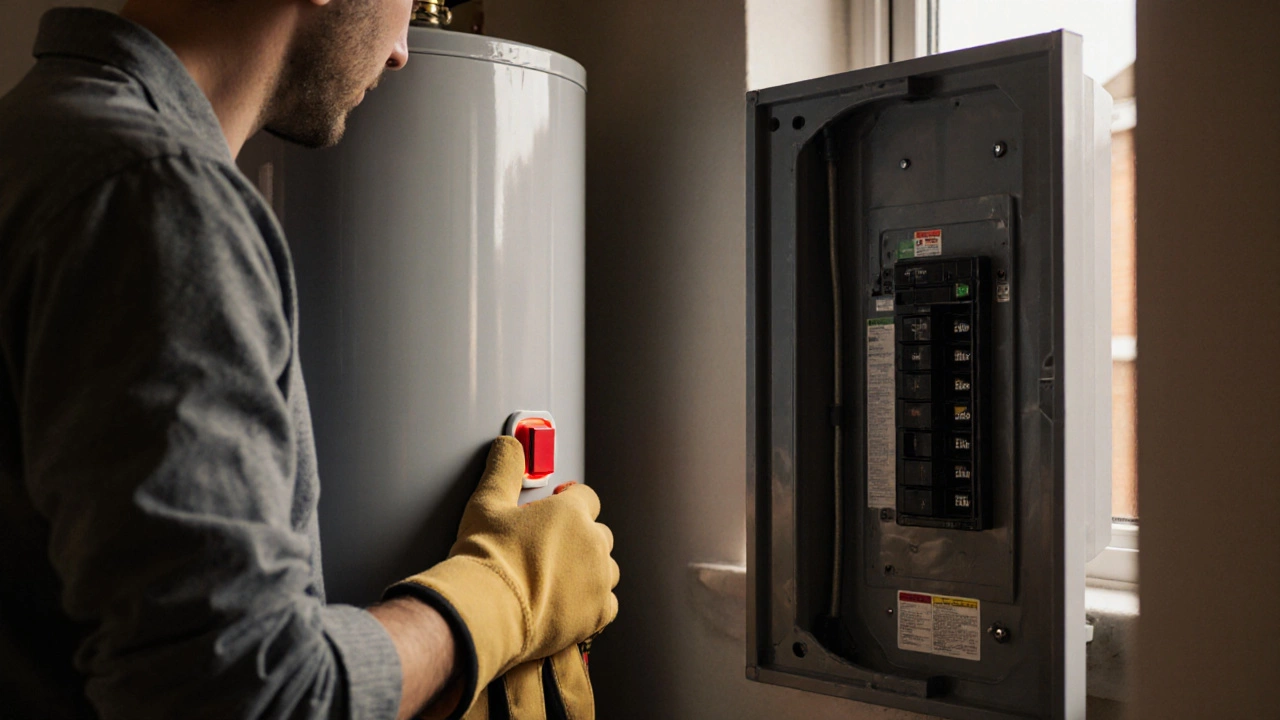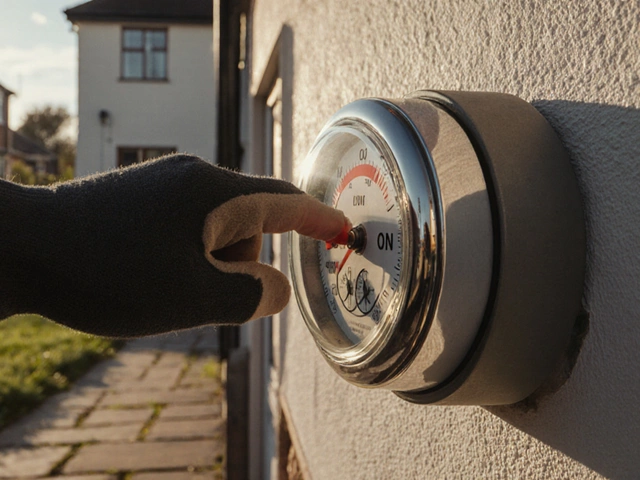Water Heater Reset Safety Checker
Safety Check Before Resetting
Answer the following questions to determine if it's safe to press your water heater's reset button.
Answer the questions above to see if it's safe to press your reset button.
Key Takeaways
- Pressing the reset button is safe only after the heater has cooled down and the underlying fault is identified.
- The reset button is part of the high‑limit switch, which cuts power when water gets too hot.
- Common triggers for a tripped reset are a faulty thermostat, a blocked vent, or a broken heating element.
- Always turn off the electricity and follow the step‑by‑step reset procedure to avoid injury.
- If the reset trips again, call a qualified technician - it usually means a deeper component is failing.
Homeowners often wonder whether they can simply hit the water heater reset button and get back to hot showers. The short answer is: it depends. Pressing it without understanding what caused the trip can be unsafe and may damage the unit further. This guide walks you through what the reset button actually does, when it’s okay to press it, and how to do it safely.
Water Heater is a home appliance that stores and heats water for domestic use, typically powered by electricity or gas. Most modern electric models feature a Reset Button that is integrated into the high‑limit safety switch. When the water temperature exceeds a safe threshold, the switch cuts power to prevent overheating and then requires a manual reset.
What the Reset Button Actually Does
The reset button is not a magic switch that "fixes" a broken heater. It’s a safety mechanism linked to the High‑Limit Switch a thermal fuse that opens the circuit if water temperature rises above the preset limit (usually around 180°F / 82°C). When the switch opens, the heater stops heating and the controller displays a fault. Pressing reset simply tells the system, "I’ve checked the issue, now power can flow again." If the condition that caused the trip persists, the switch will open again.
Common Reasons the Reset Trips
Before you press reset, identify why it tripped in the first place. Typical culprits include:
- Thermostat failure - inaccurate temperature reading keeps the element on too long.
- Heating Element malfunction - a shorted coil can draw excess current, heating water faster than the safety switch can respond.
- Blocked or restricted vent (in gas‑powered units) causing heat buildup.
- Scale buildup on the element or inside the tank, reducing heat transfer and forcing the element to work harder.
- Faulty Pressure Relief Valve that lets excess pressure build, indirectly raising temperature.
- Electrical issues such as a loose connection on the Control Board or a tripped circuit breaker in the consumer unit.

When It Is Safe to Press the Reset Button
Follow this checklist before you hit reset:
- Turn off the power at the main Electric Circuit Breaker the switch in your home’s fuse box that controls electricity to the water heater. Wait at least 5 minutes for the heater to cool.
- Visually inspect the unit. Look for leaked water, corroded terminals, or obvious damage.
- Check the thermostat setting. It should be between 120°F and 140°F (49‑60°C) for most homes. If it’s set too high, lower it.
- Make sure the vent (for gas models) is clear and the pressure relief valve isn’t stuck.
- If you smell burnt wiring or notice scorching, stop immediately and call a professional.
- After confirming the above, turn the breaker back on.
- Press the reset button firmly once. You should feel a click, indicating the high‑limit switch has re‑engaged.
- Listen for the unit to start heating. If it powers up and runs for a few minutes without tripping again, you’ve likely resolved the issue.
How to Press the Reset Button Properly
Even a simple action can be risky if done wrong. Here’s the safest way to reset:
- Locate the reset button. It’s usually a red or black button on the side of the heater, near the thermostat.
- Wear insulated gloves to protect your hands from any residual heat.
- Press the button firmly until you hear a snap. Do not “hold” it down; the switch is a latch that stays engaged after a single press.
- Close the access panel and restore power.
What Can Go Wrong If You Reset Too Soon
Pressing reset while the heater is still hot or before fixing the root cause can cause:
- Repeated trips of the high‑limit switch, leading to premature wear.
- Electrical arcing that could start a fire.
- Over‑pressurization if the pressure relief valve is compromised, potentially bursting the tank.
- Void of warranty if you tamper with internal components without a technician’s sign‑off.
In short, an impatient reset can turn a minor hiccup into a costly repair.

When to Call a Professional
If you’ve followed the safety checklist and the reset still trips within a few minutes, it’s time to call a qualified Water Heater Repair service that specializes in diagnosing and fixing heating‑system faults. Typical red‑flags include:
- Multiple trips within an hour.
- Visible water leakage from any part of the unit.
- Strange noises like popping or hissing.
- Any signs of corrosion on wiring or terminals.
Professional technicians have the tools to test the element resistance, verify thermostat calibration, and replace the high‑limit switch if needed.
Quick Reference Table
| Safe to Reset | Not Safe - Call a Pro |
|---|---|
| Heater has cooled, breaker is off, no visible damage. | Breaker trips again within 5 minutes after reset. |
| Thermostat set within recommended range. | Water leaks from the tank or connections. |
| Vent (gas) clear, pressure relief valve functions. | Burnt smell, scorching, or audible sparking. |
| No error codes or flashing lights on the control panel. | Repeated reset trips over several days. |
Final Thoughts
The reset button is a lifesaver when used correctly, but it’s not a shortcut for proper maintenance. Treat it as a reset after you’ve ruled out obvious faults, always turn off electricity first, and never ignore repeated trips. A bit of caution now can save you from a sudden leak, an electrical fire, or an expensive tank replacement.
Frequently Asked Questions
What does the reset button look like?
On most electric water heaters it’s a small red or black button about the size of a thumb, mounted on the side of the unit near the thermostat. Some models hide it behind a removable panel.
Can I reset a gas‑powered water heater?
Gas units don’t have an electrical reset button. They rely on a pilot light and an electronic control board. If a gas heater stops heating, you’ll need to check the pilot, the gas supply, and the safety valve, then call a professional.
How often should I test the reset button?
Treat it like a safety feature - test it only when the heater trips or during a routine maintenance check (once a year). Pressing it unnecessarily can wear out the high‑limit switch.
Why does my heater keep tripping the reset after I fix a leak?
A leak can let cold water flood the heating element, causing it to overheat once the system refills. It can also introduce mineral deposits that make the element work harder. After fixing the leak, run a full flush and let the unit recover before resetting.
Is it normal for the reset to trip on the first use after installation?
Yes, new units sometimes have air trapped in the tank or a slightly mis‑aligned thermostat. Run the heater for a short cycle, allow it to cool, then reset. If it trips again after several cycles, contact the installer.




